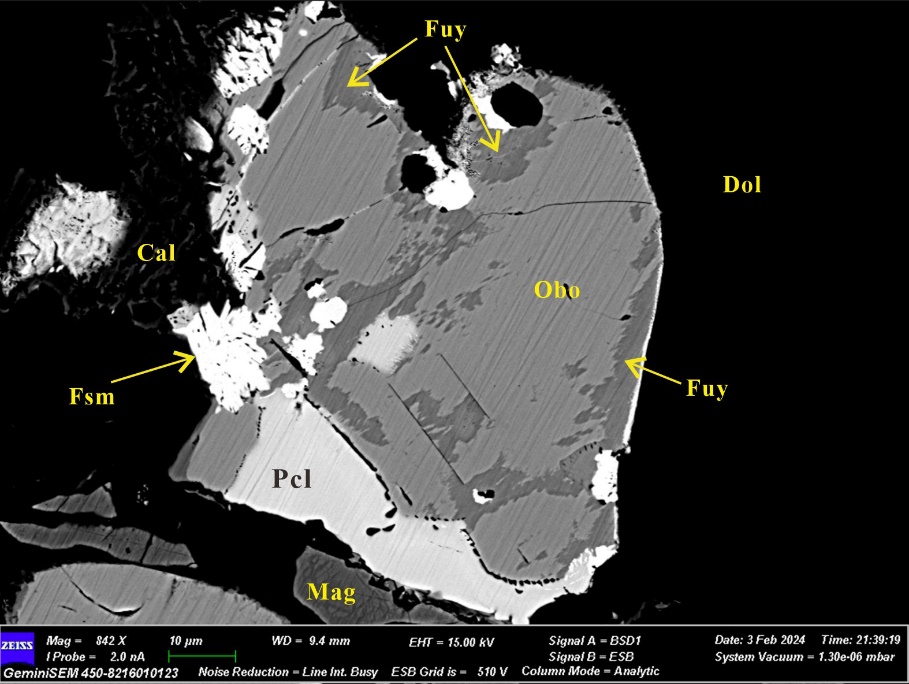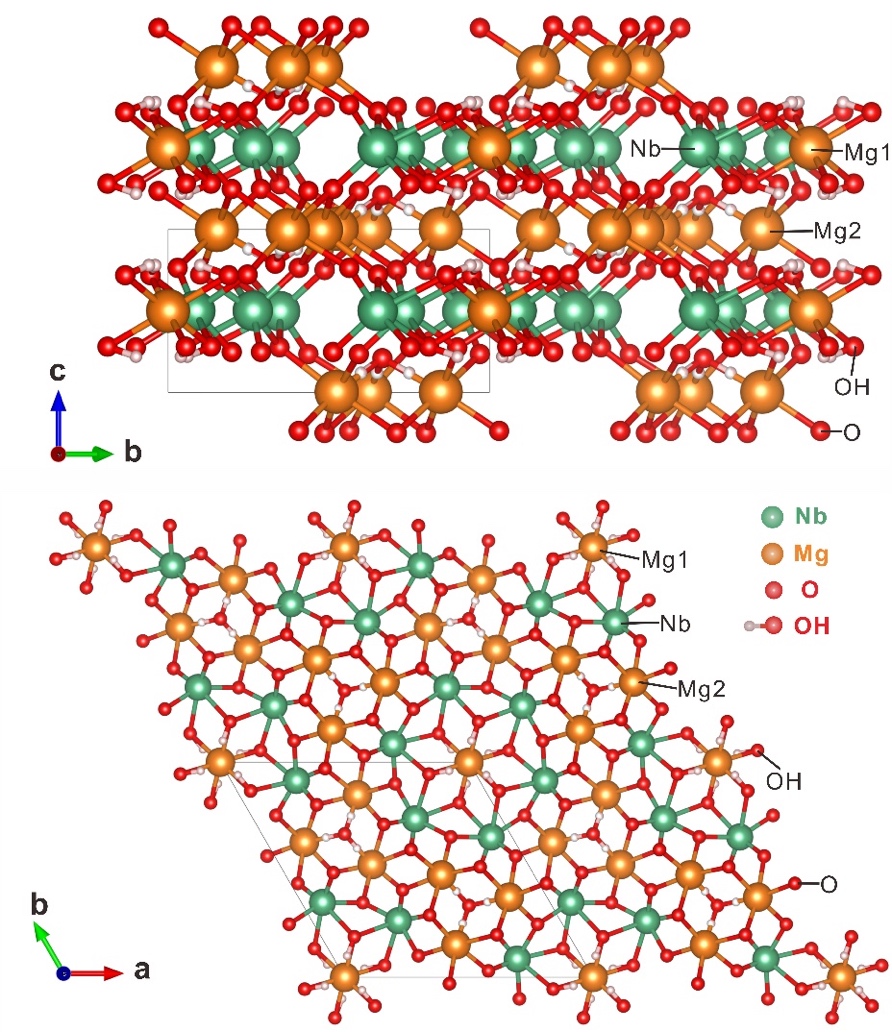Recently, our research team, led by Researcher FAN Hongrui, discovered and named a new mineral, Fuyuanite, in the Bayan Obo deposit in Inner Mongolia, China. After a thorough review by the Commission on New Minerals, Nomenclature, and Classification of the International Mineralogical Association (IMA-CNMNC), the mineral received unanimous approval and was officially designated as IMA 2024-059.
This work was collaboratively completed by Postdoctoral Fellow SHE Haidong, Researcher FAN Hongrui, Researcher LI Xiaochun, Associate Researcher YANG Kuifeng, and Doctoral student ZHAN Yunxiang from our institute, in partnership with Professor GU Xiangping from Jiangxi University of Applied Science and Senior Engineer WANG Qiwei from the Baotou Rare Earth Research Institute.
The discovery of Fuyuanite represents another major research achievement for the team in the Bayan Obo deposit this year, following the discoveries of oboniobite (approved in early May, numbered IMA 2023-118a) and Scandio-fluoro-eckermannite (approved in early June, numbered IMA 2024-002).
Fuyuanite occurs in the carbonatite of the Bayan Obo deposit. It is reddish-brown to brown in color, has a vitreous luster, and forms tabular crystals with a euhedral to subhedral habit. The crystal grain size ranges from approximately 40 to 60 μm, with a density of 4.156 g/cm³. It is typically associated with minerals such as oboniobite, magnetite, columbite, fersmite, pyrochlore, carbonate minerals, forming mineral aggregates (Figure 1). Fuyuanite is a metal oxide mineral with a new crystal structure and chemical composition that contains water. It is primarily composed of magnesium (Mg) and niobium (Nb), with an average Nb₂O₅ content of 67.3 wt.%. Its chemical formula is (Mg6.31Fe0.53Mn0.20)Σ7.03(Nb5.96Ti0.03)Σ5.99O18(OH)8, and the idealized formula is Mg7Nb6O18(OH)8. The new mineral is trigonal, with the space group P (#147) (Figure 2).
(#147) (Figure 2).
The new mineral is named in honor of Researcher WU Fuyuan, an academician at our Institute, to recognize his outstanding contributions to the study of leucogranite genesis and the metallogenic mechanisms of rare metals. In particular, it acknowledges his significant role in advancing research on mineralogy, ore deposits, and rare earth resource potential of the Bayan Obo deposit.

Fig 1: Backscattered electron image of fuyuanite (Fuy) associated with oboniobite (Obo), pyrochlore (Pcl), fersmite (Fsm), magnetite (Mag), calcite (Cal), and dolomite (Dol). (Image by FAN's Group)

Fig 2: Crystal structure of fuyuanite, showing its unique trigonal symmetry and atomic arrangement
The Bayan Obo deposit is the largest rare earth deposit and the second-largest niobium deposit globally. It is also a significant site for mineralogical research, hosting approximately 210 identified minerals. The newly discovered Fuyuanite is the 23rd new mineral found in this deposit. Fuyuanite, with its high niobium content, is expected to contribute to the number of potentially exploitable niobium minerals in the Bayan Obo deposit.
Furthermore, fuyuanite is identified as an alteration product of oboniobite, featuring a notably higher niobium concentration. This characteristic renders it an important focus for studying the transformation of niobium-bearing mineral phases and the migration behavior of niobium during fluid alteration processes. Fuyuanite and oboniobite exhibit notable differences from the established niobium mineral groups (such as the columbite group, pyrochlore group, and fergusonite group) in terms of crystal structure types and cation composition. Therefore, these two minerals could potentially lead to the creation of a new niobium mineral group.